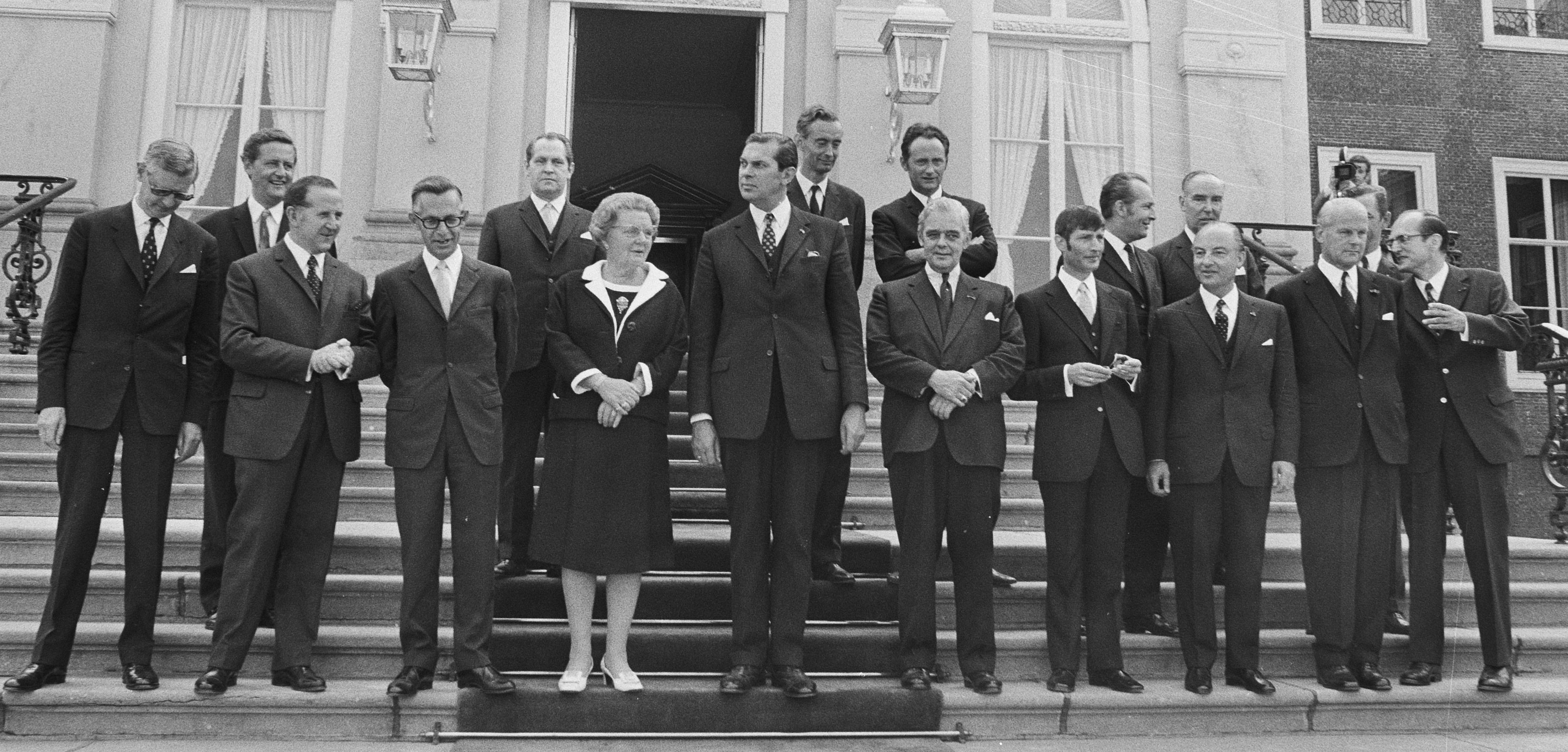A Dutch tradition: the official government photograph - NL Host Nation
A Dutch tradition: the official government photograph
We’ll be kicking off this series ‘Typically Dutch’ with the tradition of the bordes scene. Every time a new Dutch government is sworn in, an official photograph with the head of state is taken on the palace steps. This is a relatively new tradition. The first photograph with the monarch on the palace steps was taken as recently as 1971.
The idea to present the new government, together with the Queen, on the steps of Huis ten Bosch Palace, came from former Prime Minister Barend Biesheuvel.
As far as we can trace in the archives, the first photograph on the steps – but without the monarch – was taken in 1933. It was probably taken on 26 May 1933, to be precise, just after the second Colijn government was sworn in. Colijn’s successor, Prime Minister Dirk Jan de Geer, continued this tradition. It is the first moment that a newly sworn-in government appears in front of the media.
Since the 1990s the occasion has been referred to in Dutch as the ‘bordesscène’ or ‘bordesfoto’. The term bordes originates in the 14th century and is derived from the old French bretesque or bretesche, referring to the wooden extension to a building.
Dress codes
Back in 1971 Queen Juliana was not initially enthusiastic about appearing in a photograph with the new government. The reason was their choice of clothes. As she put it, she didn’t want to be photographed with ‘a bunch of funeral directors’.
The morning coats, which male ministers wear for the swearing-in ceremony, were therefore swapped for dark suits. The dress code for female ministers was a two-piece skirt suit. Alternatively, a smart skirt or trousers without a jacket was also acceptable.
These days there is no dress code, although government ministers are expected not to dress more extravagantly than the King or Queen, who should of course be the main focus. And male ministers still change out of their morning coats into suits after the swearing-in ceremony.
Shoes
Although these days there is no longer an official dress code, sartorial choices regularly attract comment. In October 2017, for example, the new Minister of Health, Welfare and Sport Hugo de Jonge was asked during the photo shoot how he felt outshining the King with his outlandish choice of shoes. Mr De Jonge explained it wasn’t intentional. ‘I’ve always liked nice shoes. No-one ever blinked an eye in Rotterdam.’
The official photograph has caused controversy in the past, too. In 1982, the Algemeen Dagblad newspaper wrote that the then Minister for Development Cooperation, Eegje van Schoo, looked like she'd ‘walked straight out of a squat’. She was wearing black trousers and an oversized, purple-lined jacket.
Many Dutch people will also remember the canary yellow jacket worn by Annemarie Jorritsma in 1994: ‘If only someone had warned me,’ she said afterwards.
Protocol for the traditional photograph
The prime minister and deputy prime minister(s) always flank the head of state. The King or Queen is positioned in the middle of the front row, with the prime minister to their right and the deputy prime minister(s) to their left.
The other ministers are positioned according to how long their ministry has been in existence. Sometimes this protocol is overridden, for example to place more women in the front row.
The photograph is always taken on the steps of Huis ten Bosch Palace, Noordeinde Palace or Soestdijk Palace. One exception to this rule is the official photograph of the second Van Agt government, which was taken inside in 1981 because of bad weather. It was also the first photograph of its kind taken with Queen Beatrix.
This text was originally published on the central government intranet by the Ministry of General Affairs.

